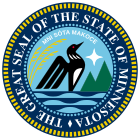
The Minnesota Democratic–Farmer–Labor Party (DFL) is a political party in the U.S. state of Minnesota. It is affiliated with the national Democratic Party. The DFL controls four of Minnesota's eight U.S. House seats, both of its U.S. Senate seats, the Minnesota House of Representatives and Senate, and all other statewide offices, including the governorship, making it the dominant party in the state. Its main political rival has been the Republican Party of Minnesota.
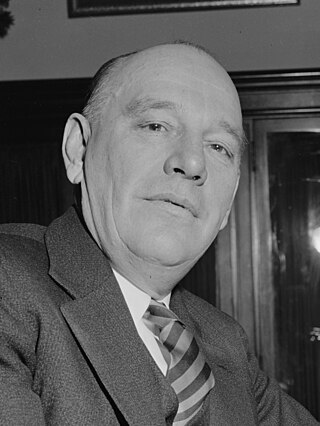
Ernest Lundeen was an American lawyer and politician who represented Minnesota in the United States House of Representatives from 1917 to 1919 and 1933 to 1937 and the United States Senate from 1937 until his death in 1940. He was a member of the Republican Party before joining the Minnesota Farmer–Labor Party, and he opposed American involvement in World War I and World War II.

The Republican Party of Minnesota is the state affiliate of the Republican Party in Minnesota and the oldest active political party in the state. Founded in 1855, the party controls four of Minnesota's eight congressional House seats. The last Republican governor of the state was Tim Pawlenty, who served from 2003 to 2011. The party's headquarters is located in Edina, Minnesota and the current chairman is David Hann. Starting in 2023 and as a result of the 2022 elections, the Republican Party of Minnesota does not have substantial power over the state, holding no statewide executive offices, no U.S. Senate seats, and minorities in the state legislatures.
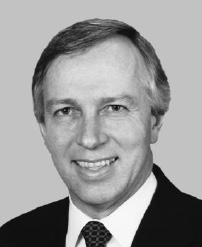
William Paul Luther is an American politician and lawyer from Minnesota. Luther was a Democratic-Farmer-Labor Party (DFL) member of the United States House of Representatives representing Minnesota's 6th congressional district from January 3, 1995, to January 3, 2003, serving four consecutive terms.
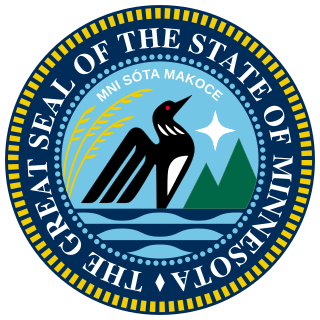
The Minnesota Legislature is the bicameral legislature of the U.S. state of Minnesota consisting of two houses: the Senate and the House of Representatives. Senators are elected from 67 single-member districts. In order to account for decennial redistricting, members run for one two-year term and two four-year terms each decade. They are elected for four-year terms in years ending in 2 and 6, and for two-year terms in years ending in 0. Representatives are elected for two-year terms from 134 single-member districts formed by dividing the 67 senate districts in half.
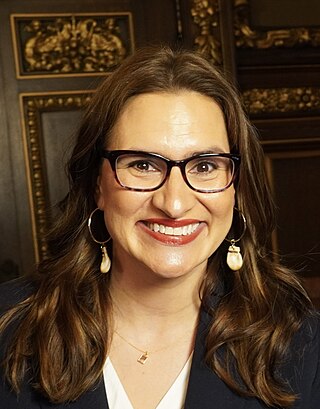
The lieutenant governor of Minnesota is a constitutional officer in the executive branch of the U.S. state of Minnesota. Fifty individuals have held the office of lieutenant governor since statehood. The incumbent is Peggy Flanagan, a DFLer and the first Native American elected to a statewide executive office in Minnesota's history.
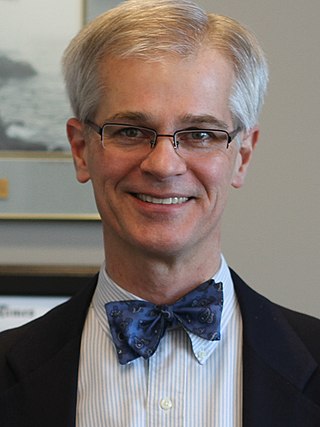
John J. Marty is a member of the Minnesota Senate, representing District 40, which includes parts of Ramsey County in the northern Twin Cities metropolitan area. As a young state senator, he ran for governor of Minnesota in 1994. He won the DFL nomination and the Democratic primary but lost the general election to the incumbent governor, Arne Carlson. Marty ran for governor again in 2010, but withdrew from the race after failing to win his party's endorsement.

The state treasurer of Minnesota was a constitutional officer in the executive branch of the U.S. state of Minnesota. Twenty-six individuals occupied the office of state treasurer from 1858 until the office's abolition in 2003. The final state treasurer was Carol C. Johnson, a DFLer.

Minnesota is known for a politically active citizenry, with populism being a longstanding force among the state's political parties. Minnesota has consistently high voter turnout; in the 2008 U.S. presidential election, 77.8% of eligible Minnesotans voted – the highest percentage of any U.S. state or territory – versus the national average of 61.7%. This was due in part to its same day voter registration laws; previously unregistered voters can register on election day, at their polls, with evidence of residency.
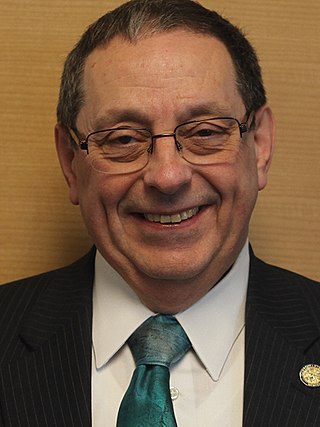
Jim Carlson is a Minnesota politician and member of the Minnesota Senate. A member of the Minnesota Democratic–Farmer–Labor Party (DFL), he represents District 52, which includes all but one precinct of Eagan and Mendota Heights, all of Mendota, and some of Burnsville in Dakota County in the southeastern Twin Cities metropolitan area.
Lyle J. Koenen is a Minnesota politician and former member of the Minnesota Senate. A member of the Minnesota Democratic–Farmer–Labor Party (DFL), he represented District 17, which included portions of Chippewa, Kandiyohi, Renville, and Swift counties in the southwestern part of the state.

The 1934 United States Senate election in Minnesota took place on November 6, 1934. Incumbent Farmer–Labor U.S. Senator Henrik Shipstead defeated former State Senator Nathaniel J. Holmberg of the Republican Party of Minnesota and U.S. Representative Einar Hoidale of the Minnesota Democratic Party to win a third term.

Erin Maye Quade is an American politician from the state of Minnesota. A member of the Democratic–Farmer–Labor (DFL) Party, she served in the Minnesota House of Representatives from 2017 to 2019. She was the DFL-endorsed candidate for lieutenant governor as Erin Murphy's running mate in 2018, and the first LGBTQ person to be endorsed on the ticket of a major Minnesota political party.

The 1930 United States Senate election in Minnesota was held on Tuesday November 4, Incumbent Senator Thomas D. Schal defeated Einar Hoidale of the Minnesota Democratic Party and Forner United States Representative Ernest Lundeen of the Farmer–Labor Party of Minnesota to win a second term.

Omar Mahmood Fateh, is a Minnesota politician and a member of the Minnesota Senate. A member of the Minnesota Democratic Farmer-Labor Party (DFL), he represents District 62, which includes parts of south Minneapolis in Hennepin County. Fateh is the first Somali American and Muslim to serve in the Minnesota Senate.
Lindsey Port is a Minnesota politician and a member of the Minnesota Senate. A member of the Minnesota Democratic Farmer-Labor Party, she represents Senate District 56, which includes parts of Burnsville, Savage, and Lakeville in Dakota and Scott counties in the southern Twin Cities metropolitan area.
